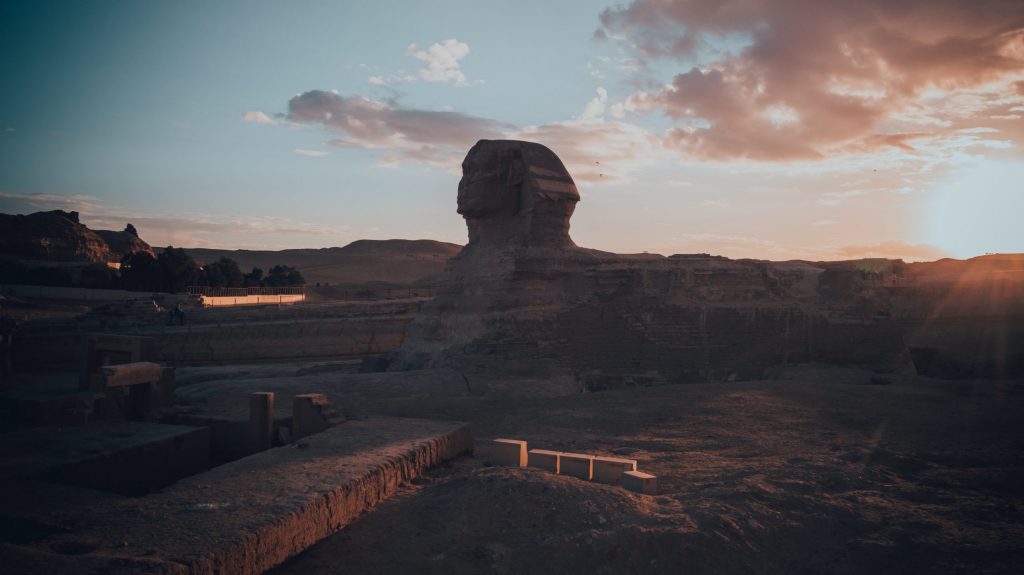Ancient Egypt, a civilization that built huge, mysterious pyramids, gave us astronomy, mathematics, medicine and much more. It survived longer than our western civilization even exists. It is so old, that it was ancient for Romans when they came to conquer it. The world that we automatically link to adventures, due to Indiana Jones, Mummy movies and even actual, nonfictional expeditions, like the discovery of Tutankhamun’s tomb and mysterious deaths of members of this expedition.
This was a civilization, worthy of one of the most famous and possibly the most attractive rulers of all times. Cleopatra VII., The Product of a Multi-Generational Incest, The Wife of Her Brother, The Killer of Her Husband, The Seducer of Roman’s hearts.
Ancient Egypt
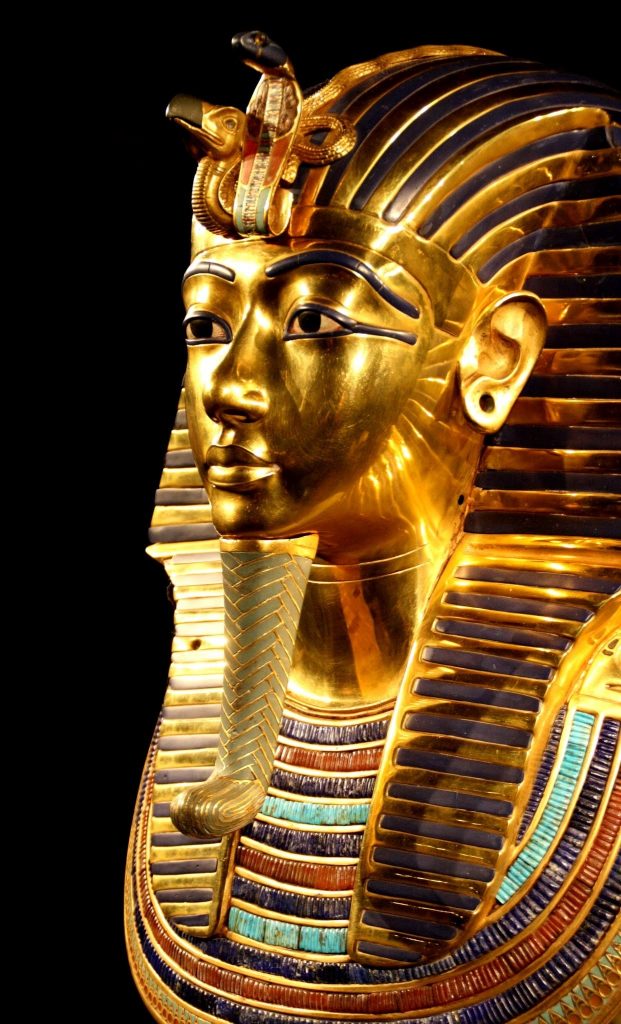
Pharaohs, the Egyptian kings, were ruling in three larger periods and the smaller ones in between (those are called Intermediate Periods). The three larger kingdoms were:
- Old Kingdom (ca. 2649-2152 B.C.)
- Middle Kingdom (ca. 2040-1070 B.C.)
- New Kingdom (ca. 1550-1070 B.C.)
It is crazy, that the pyramids of Giza were made in the oldest of those three periods, in the Old Kingdom. Like every comment section under videos about Ptolemaic Egypt would tell you: “We are so close to Romans, like they were to the origins of pyramids when they came to see them.” At this time Nile, the river that made this civilization possible, was much closer to Giza, which made the place suitable for bigger projects; they could transport huge building blocks over the river.
Life
The Nile gave and took. River’s predictable rhythm made farming easier and more reliable, but it was also a home for dangerous animals and parasites. Hippos are responsible for the majority of human deaths caused by big African animals, which is somehow strange when you take into account that they are more of a herbivore type (they also eat meat sometimes, so some dead Egyptians were probably part of their diet, but they do not go out there hunting humans). Egypt prospered mostly because of a farming surplus that was the product of the Nile’s floods.
Egyptians ate a lot of bread and beer (yes, they ate beer, in that time it looked more like a dense soup than a drink). On special occasions, they could also enjoy meat, but the lower classes were mostly vegetarian. Pharaohs and other people of higher status drank more wine than beer and could consume more honey, meat and vegetables. They had the possibility to be a lot healthier than the lower class and still, a lot of pharaohs were unhealthy and obese. Because of their mostly carbohydrate diet, Egyptians had teeth problems (which were also caused by the sand in their food, because it was, you know, everywhere) and diabetes; that also lead to the invention of toothpaste and a toothbrush. Although the pharaohs were often overweight, they were still portrayed as muscular and skinny after their beauty ideals; higher classes also used laxatives “to stay in shape.”
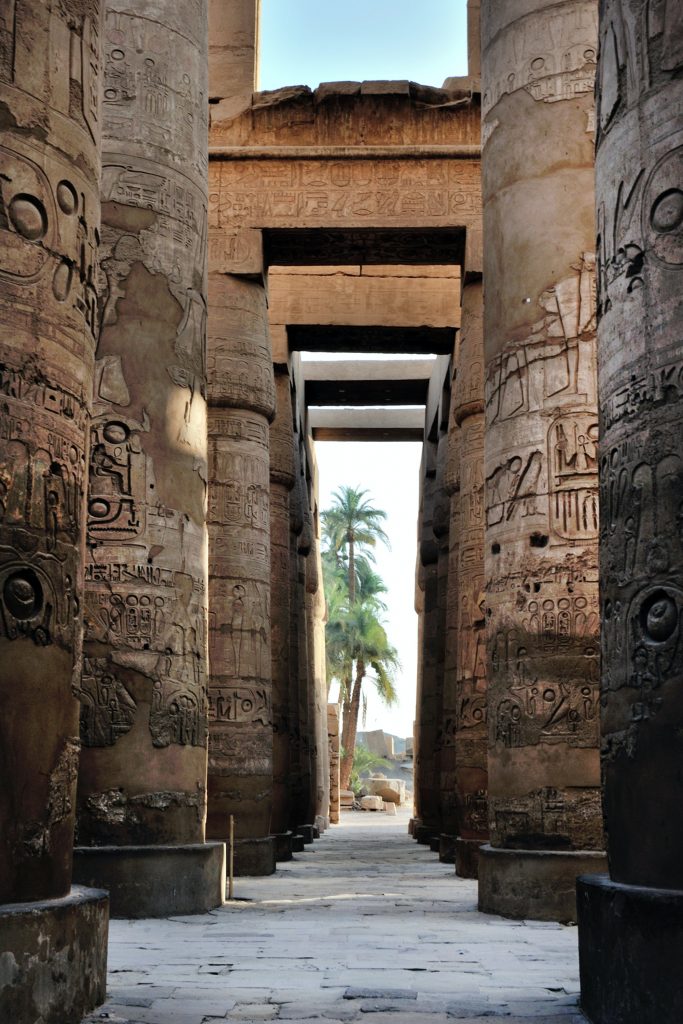
Ancient Egyptians also knew a lot about medicine and had specialists for different parts of the body, just like we do today. Despite that, members of both genders used makeup, based on lead and they thought that we think with our hearts; they did not think much about brains, which were just thrown away during mummification. Egyptians regularly shaved all parts of their body, even hair, so they would not have a problem with lice; that was also the reason, why many of them wore wigs.
Afterlife was obviously very important to them. They believed it is just an extension of life on earth, so funeral rituals were very important, so much that they worked decades to create giant tombs, like pyramids, for their living deities, pharaohs.
They had a very strict court system. Egyptians did not use jails and rather punish criminals financially or with brutal physical sentences, even deaths.
Their kings, pharaohs, were believed to be a living god Horus (or in one period, god Aten when Amenhotep IV. decided to change religion to a more monotheistic type). People worshipped them so much, they went to great lengths to please them, even work years on things that had no use for them (their yearly duty was to work some period of time on the pyramids). Pharaohs were mostly Egyptians, with exceptions like the dynasty of Nubian pharaohs and the last dynasty of pharaohs, which had Greek origins.
Ptolemaic dynasty
After the death of Alexander the Great (he conquered Egypt in 332 B.C. and “saved” them from Persian Empire that used to rule them from 664 B.C.), his generals divided the empire between themselves. In the year 305 B.C., Ptolemy I. Soter took the Egyptian part and The Dynasty of Greek Pharaohs began.
Ptolemeise adopted, for Greeks, a strange marriage strategy; they married each other. Incest was common for them, you were a black sheep in the family if you didn’t marry your sibling or cousin. They wanted to keep the blood clean, like Egyptian pharaohs used to do in the past (or for example Targaryens, if you are familiar with Game of Thrones). They did not just love their relatives, they “loved” them so much, that they wanted to kill them. King and queen were always in danger from one of their too ambitious siblings, so they often killed them, just in case if they would decide to backstab them.
There was a lot of drama and scandals surrounding this family and their country started to weaken. After a lot of wars with their neighbors and civil wars (jealous siblings, remember?), Egypt needed a strong ally like Rome. The feeling was mutual, Rome needed grain and farming prospered in Egypt. Ptolemies also brought more olives and grapes in Egypt, which both thrived in this environment and were popular in Rome, so the alliance was made.
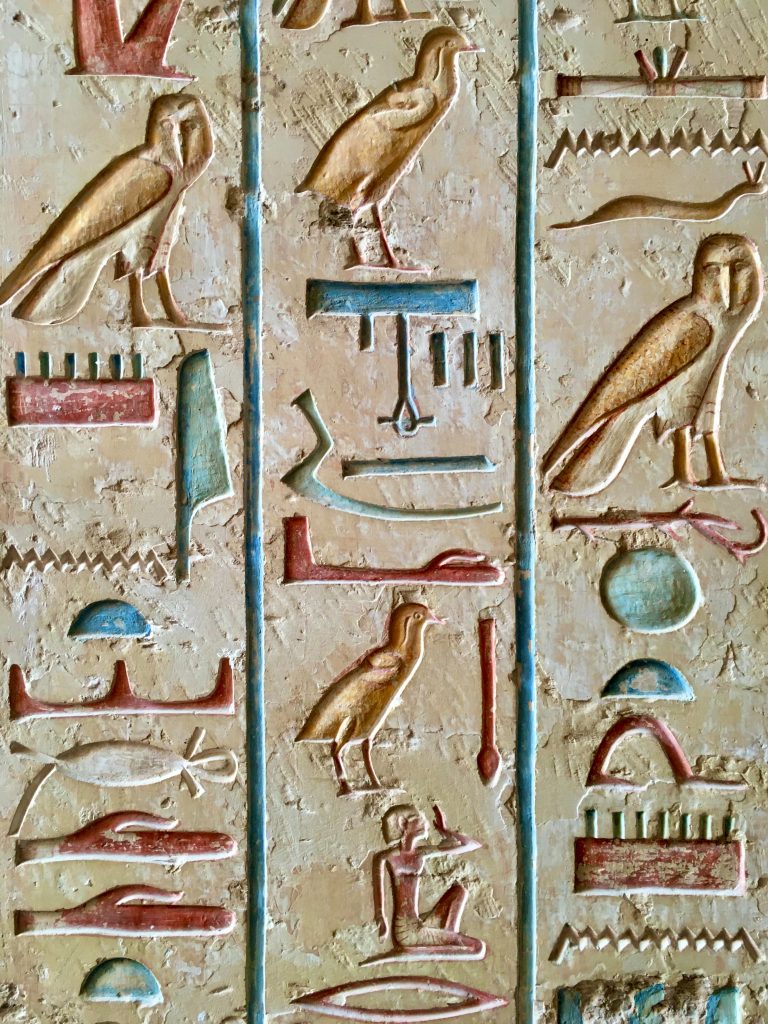
Ptolemies established the capital in Alexandria, a seaside, multicultural city, that connected the Nile and Mediterranean, with a huge port (that could hold more than 1000 ships), a famous library and a lighthouse (one of The Seven Wonders of Ancient World). Scholars from all around the ancient world visited this by the Ptolemies financed Alexandrian library, which contained a lot of knowledge from everywhere. Although the higher class was entirely made out of immigrated Greeks, the religion stayed Egyptian (how the tables have turned, now that Greece needs to accept immigrants). They decided to mix Greek and Egyptian religions and create some new gods. Ptolemies also adopted Egyptian art style, so that we can see the pharaoh’s portraits in Greek and Egyptian style; the same person does not really look alike, if you compare his two portraits, one made in Greek and the other in Egyptian style. In this time period, we also got the Rosetta stone. This dark stone contains Egyptian hieroglyphs and the Greek translation, which made hieroglyphs decoding possible more than a thousand years later.
Greeks shaped Egypt in many ways. They lived separate from Egyptians and were also judged differently. Greek laws applied to Greeks and Egyptian laws applied for Egyptians. Ptolemies built temples for both religions and even tried to merge them together by applying new gods; they also adopted mummification. Greeks brought gymnasiums and theaters, to spread their cultural achievements. They were more entitled (strange that cancel culture does not want to cancel Ancient Greek philosophers, mathematicians and historians) and richer than Egyptians.
As we can see, Ptolemies were also very original with their names. All the boys were named Ptolemy and most of the girls were Berenices and Cleopatras, so it really is a big surprise, that their most famous member is named Cleopatra.
Cleopatra VII.
After almost 300 years of Ptolemaic rule in Egypt, it was time for Cleopatra VII. to join this game of thrones. After the death of her father Ptolemy XII., 18-years old Cleopatra started co-rule with her 10-years old brother and now new husband Ptolemy XIII. Even though she was a product of incest, she still was extremely smart. She spoke 9 languages and had the best possible education, after all she was the king’s daughter in Alexandria, a city that was known for one of the best libraries.
She also spoke the Egyptian language. You would probably think, it was not a big deal for someone to speak the same language as their servants, but it actually was. She was the first Ptolemaic pharaoh that spoke the language of her subjects.
The mood between the king and the queen was unpleasant, which is probably not so uncommon between married couples, although it was a little worse than it is in usual (they wanted each other dead, which I think, and hope, it was more of an uncommon thing in the marriage). His advisers did not like the fact that she was the one that held all strings in her hands and after some time, Ptolemy and his advisers managed to banish her from Egypt. Cleopatra then went into Syria to gather an army and the civil war was on.
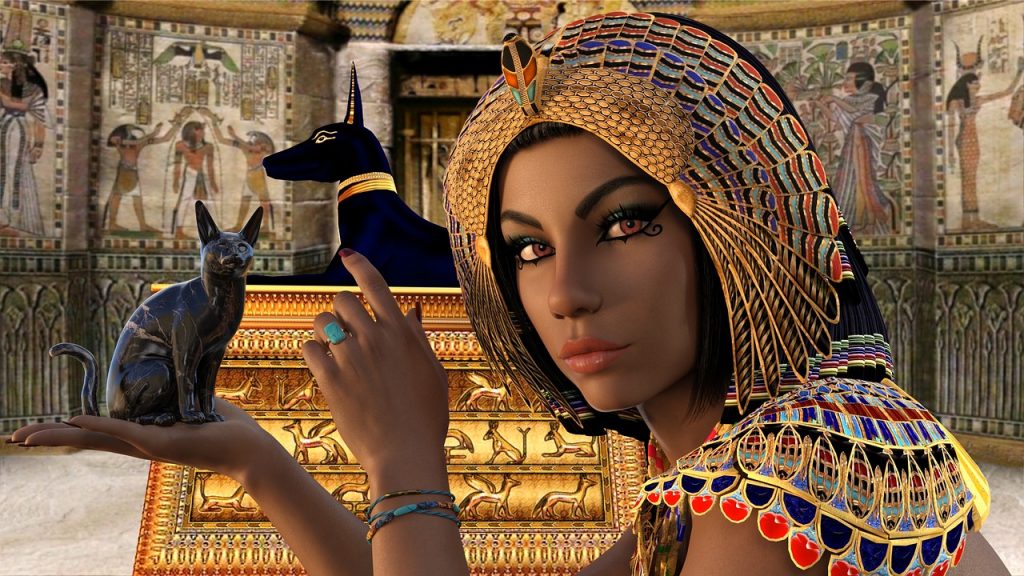
At the same time Julius Caesar and Pompey fought between themselves, about the fact who should rule The Roman Republic. Pompey was a friend and ally of Cleopatra’s and Ptolemy’s father, so he decided to seek shelter in Egypt after he had been defeated in Greece. Unfortunately, he made an alliance with Cleopatra and not Ptolemy who was on the throne at the time. Cleopatra’s brother saw an opportunity “to make friends” with Caesar and killed unsuspicious Pompey when he came to recover his strength.
But everything did not go accordingly to the plan. When Julius came looking for his rival, he was greeted with Pompey’s head. But he was not happy to see that. He respected Pompey and did not want to end things in this way. In his fury, he decided that there would be no alliance with someone that killed Pompey so dishonorably.
Meanwhile, Cleopatra found out about Caesar’s presence in Alexandria. She decided to meet him and made an alliance, just like she made it with Pompey. But there was a problem. She was in Syria and between her and Julius was Ptolemy’s army and territory. Cleopatra and her advisors came up with a solution that seems more appropriate for a movie, than a diplomatic mission. She was smuggled into Caesar’s personal rooms wrapped into a carpet. After a surprising first impression, she managed to get Caesar on her side. Many people nowadays believe that she succeeded due to her amazing beauty, but historians do not agree, that she was so attractive as the media portraits her; although we can just assume that from portraits of her. Supposedly, it was her mind that made her so attractive, not her looks.
After the alliance was made, it was time to strike Ptolemy from the throne. The Siege of Alexandria lasted months and Romans were in the minority. Luckily, reinforcements came and together they defeated Ptolemy, which was drowned in the Nile during the battle. Cleopatra was finally ruling Egypt, just like she wanted.
After that, Julius Caesar and Cleopatra VII. went together in Rome and lived there with their son. Unfortunately, there was no happy ever after for them. In year 44 B.C. Caesar was killed by the senate, and Rome was not a safe place anymore for Cleopatra and her son (which was not even mentioned in Caesar’s will), so they fled back to Egypt, where she proceeded with her rule.
Now she needed new allies and in the year 41 B.C. decided to meet Mark Antony, on his invitation, in today Turkey, where he was preparing for a war against Octavius. Octavius and Marcus Antonius both wanted to rule The Roman Republic and as you can expect, it came to a conflict of interest. Nevertheless, Cleopatra decided to impress her new potential ally. She came on a rich decorated ship, accompanied by music and lots of perfume. It all proceeded as planned and Mark and Cleopatra became more than just two allies.
After they separated in Turkey, they kept regular correspondence and she gave birth to Mark’s twins. When they met again, now on Cleopatra’s territory in Alexandria, this meant a happy time for them. They hosted a lot of parties, formed a drinking society Inimitable Livers and overall had a great time. Mark and Cleopatra even masked themselves and played pranks on the other citizens of Alexandria.
All good ends somewhere. In the year 31 B.C. Mark and Cleopatra fought Octavius at The Battle of Actium, in Greece. This navy battle was won by their enemy, so they fled back to Egypt. Rome was now an Empire and Octavius was the first Roman emperor. Obviously, he decided to get rid of Mark Antony and followed them to Egypt, because Cleopatra refused to kill Mark; crazy right, supporting partner when he is not at his best.
Then the situation became a real Romeo and Juliet scenario. At Octaviu’s arrival in Alexandria, Mark was somehow convinced that Cleopatra was dead and wounded himself in an attempt to kill himself. But Cleopatra was not actually dead. She was alive and even managed to see and comfort Mark before his last breath.
After her now ex-lover’s death, Cleopatra wanted to die, but she was forbidden from doing so and Octavius threatened her that something will happen to her children if she kills herself. When the Romans killed her child, took the other three somewhere in Rome and demanded Egypt to surrender to Rome, she finally decided to take her own life. There are more theories of how she did it, the most popular being one in which she let the snake bite and poison her. After the suicide, she was, on her last wish, buried next to her lover, ally and friend Mark Antony. That was the end of the Ptolemaic dynasty and in the year 30 B.C. Egypt became a Roman province.
Other two famous female Egyptian rulers
Cleopatra was not the only female, that ruled Egypt through his history. Condition for the female rule was a connection with a man that was justified to the throne (because they were living god Horus and Horus was man, if I may assume his obvious gender).
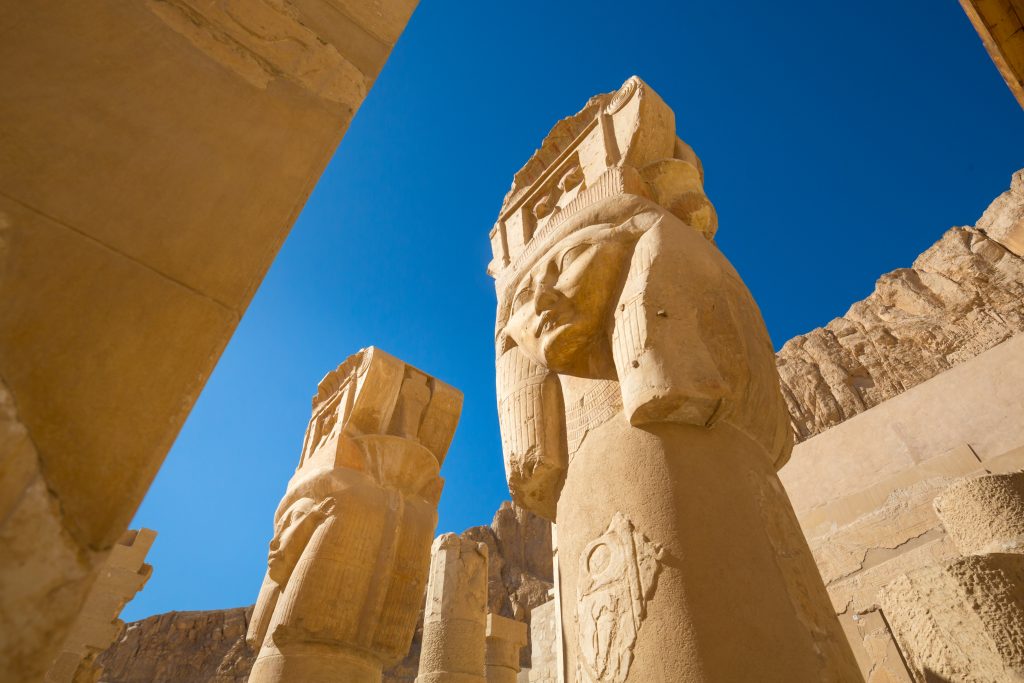
Hatshepsut was one of those successful female rulers. She was regent of her stepson Thutmose III. and later his co-ruler. She was “the brain of the operation” and succeeded to extend Egyptian borders through diplomacy not war, like male pharaohs often did. It is also interesting that she wanted to be portrayed as a male with a beard, which could probably tell us something about what Egyptians thought about female pharaohs.
Another one that is worth mentioning is Nefertiti, a wife of a somehow unpopular Amenhotep IV. Pharaoh Akhenaton, as he renamed himself later, was on a mission to change the entire Egyptian religion. Suddenly there were no more gods, there was just a god. He decided to switch a bunch of different gods with one, to replace them all. New god Aten was, surprise, surprise, he himself; like he would also be, if he just went with a tradition. As you can imagine, the new religion did not make him very popular among his people. All those cults from before, that praised different gods, were abolished and even violently persecuted if they did not convert.
In all this mess, when her husband was playing a messiah, Nefertiti needed to accept all other important decisions and was a true ruler of Egypt; nowadays, she is also known after her famous bust, which displays her as a really beautiful woman.
Sources/Further Research
- https://www.youtube.com/watch?v=ZgTCRNaJtqo, Famous Female Pharaohs and Queens of Ancient Egypt
- https://www.youtube.com/watch?v=vNrQgdSYTZA, The Mysterious Life and Death of Egypt’s Queen Nefertiti
- https://www.cemml.colostate.edu/cultural/09476/egypt02-07enl.html, From Ptolemaic and Roman Rule to the Arab Conquest (332 BC – 646 AD)
- https://www.youtube.com/watch?v=BvWJiSNtT-o, Cleopatra: The Queen of Egypt – Part 1/2 – Great Figures of History – See U in History
- https://www.youtube.com/watch?v=I8GVU4apXHk, Cleopatra and Marc Anthony – Part 2/2 – Great Figures of History – See U in History
- https://www.history.com/news/10-little-known-facts-about-cleopatra, 10 Little-Known Facts About Cleopatra
- https://www.youtube.com/watch?v=fX1CFsaCcW8, Misunderstood Moments in History – Cleopatra’s Egypt
- https://www.khanacademy.org/humanities/whp-origins/era-3-cities-societies-and-empires-6000-bce-to-700-c-e/36-the-growth-of-empires-betaa/a/read-the-ptolemaic-dynasty-beta, READ: The Ptolemaic Dynasty
- https://www.youtube.com/watch?v=QYVZFWHKWKI, Unbelievable Stuff They Didn’t Teach You About Ancient Egypt
- https://www.youtube.com/watch?v=41Q20KkhOug, 10 Fascinating Facts About the Medjay of Ancient Egypt
- https://www.youtube.com/watch?v=S3vAKRa0f5I, Overly Sarcastic Podcast: The Ptolemies
- https://www.youtube.com/watch?v=s–BaDt0Jbw, Assassin’s Creed Origins: Historical Realism Review
- https://www.history.com/topics/ancient-history/ancient-egypt, Ancient Egypt
- https://www.youtube.com/watch?v=Z3Wvw6BivVI, Ancient Egypt: Crash Course World History #4
- https://www.youtube.com/watch?v=eQzeHYI3Q7Q, Ancient Egypt | What Everyday Life Was Actually Like
- https://www.youtube.com/watch?v=papFFCFXSRg, 10 Brutal Realities of Life in Ancient Egypt
Picture Sources
- Cover image: Photo by Mustafa ezz from Pexels
- 1. Picture: Photo by Pixabay from Pexels
- 2. Picture: Photo by Roxanne Shewchuk from Pexels
- 3. Picture: Photo by Lady Escabia from Pexels
- 4. Picture: Image by 6557056 from Pixabay
- 5. Picture: Photo by Michiel Ton from Pexels

